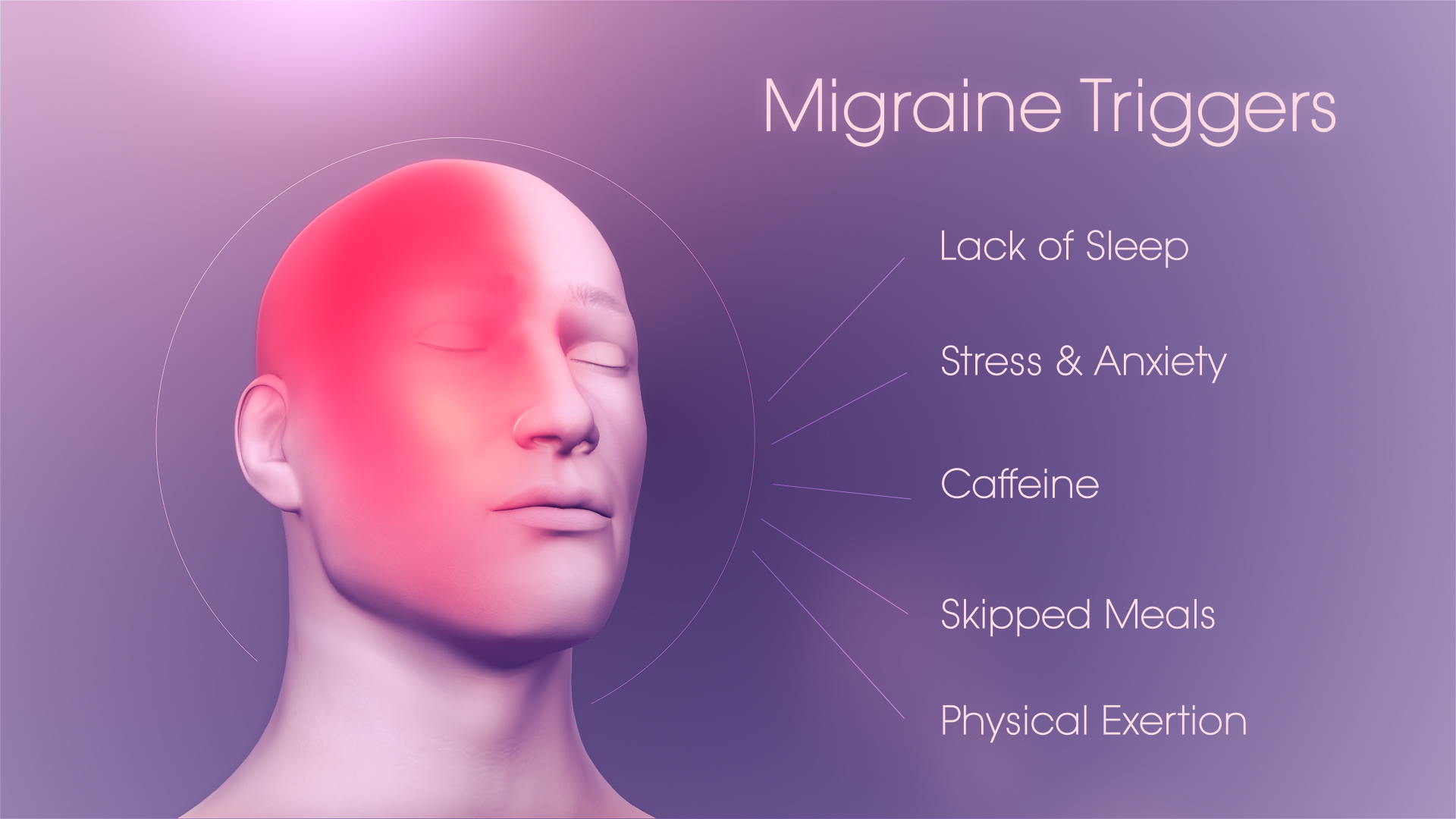A migraine is a headache disorder that is usually identified by recurring headaches that may be both mild or severe. These headaches usually last from anywhere between 2 to 72 hours. Migraines are extremely common and prevalent among 1 out of every 7 people.
Types of Migraines
There are two main types of migraines - migraine with aura and migraine without aura.
When a person experiences a disturbance of the senses leading up to a migraine, it is a case of migraine with aura. Aura is accompanied by confusion in thoughts and experiences, flashing lights, blind spots, and unpleasant smells among others.
In migraines without aura, a person experiences a migraine but without any sensory disturbance leading up to the attack. The most common form of migraines is those without an aura.

Symptoms
Symptoms of migraine may occur a while before the headache, immediately before the headache, during, and after the headache. The symptoms vary in different stages.
Prodrome stage: In this stage, the symptoms of migraines may begin one to two days before the headache. The symptoms include:
- Cravings for food
- Depression
- Tiredness
- Frequent yawning
- Hyperactivity
- Irritability
- Neck stiffness
Migraine with aura: This stage occurs after the prodrome stage. During an aura, people may experience problems such as
- Difficulty in speaking clearly
- Temporary vision loss
- Feeling a tingling sensation in the face, arms or legs
- Seeing light flashes or bright spots
Attack stage: This stage is the most severe of the stages when the actual migraine pain occurs. The symptoms during this stage can last anywhere from hours to days and vary from person to person. Some of the symptoms include:
- Nausea and vomiting
- Increased sensitivity to sound and light
- Dizziness
- Pain on one side of the head
- Throbbing head pain
Postdrome stage: During this stage, people usually experience changes in mood and feelings.
Causes
The causes of migraines are a mix of genetic and environmental factors. The triggers that are likely to set off a migraine could be hormonal changes or emotional triggers like stress, depression, excitement or anxiety.
Physical causes such as tiredness or insufficient sleep, poor posture, the tension in the neck, and low blood sugar can also act as triggers for a migraine. Other triggers could also be alcohol, caffeine, or some specific types of food. Irregular mealtimes and dehydration are also considered as potential triggers for a migraine.
Environmental factors such as strong smells, bright lights, loud noises or second-hand smoke are also possible triggers.
Treatment
There are three main aspects of treatment. These are trigger avoidance, acute symptomatic control, and medication for prevention.
Trigger avoidance requires lifestyle changes like getting enough sleep, reducing stress and regular physical exercise.
There are many different types of migraine medication, including painkillers. Over-the-counter medications effective for treating this disease include naproxen, ibuprofen, and acetaminophen.
There are several medications and supplements that help prevent such acute headache attacks, including antidepressants, vitamin B-12 supplements, and riboflavin. However, some people can experience a medication overuse headache or rebound headache. This happens when too many medications are taken in an attempt to prevent its attacks.
Migraine is the world’s third most common disease. Because of it being so prevalent, there are a lot of medications available for curing migraines, also proper precautions must be taken.
Disclaimer: The information in no way constitutes, or should be construed as medical advice. Nor is the above article an endorsement of any research findings discussed in the article an endorsement for any of the source publications.
Sources-
- https://www.medicalnewstoday.com/articles/148373.php
- https://www.healthline.com/health/migraine
- https://en.wikipedia.org/wiki/Migraine








